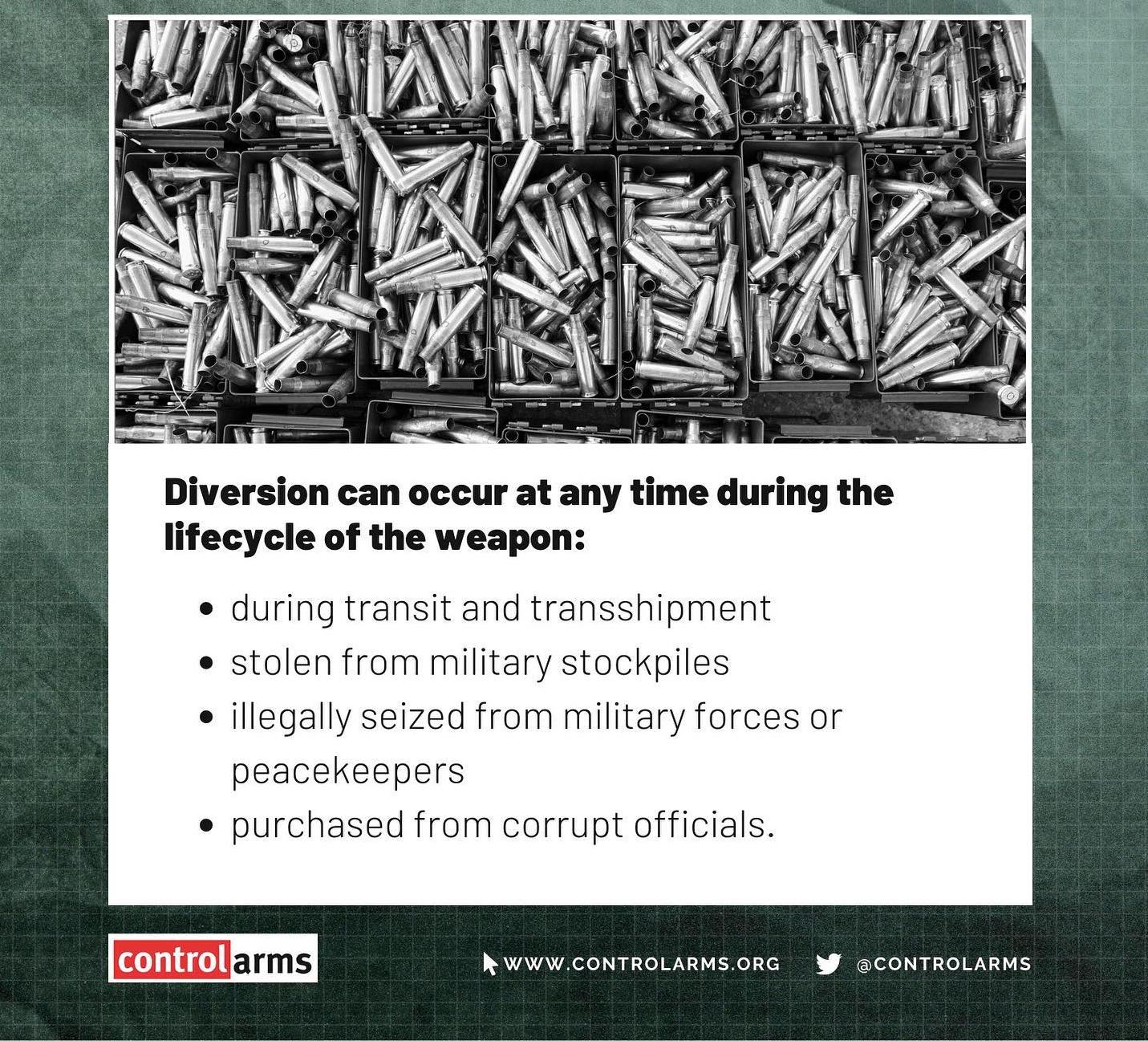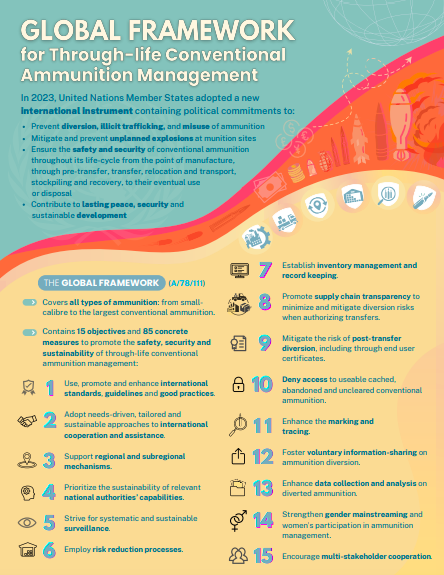Background: A New Global Framework for Ammunition
While diverted ammunition fueled conflict, crime, and terrorism, and as accidental explosions at ammunition depots claimed thousands of lives worldwide, ammunition control remained a glaring gap in international arms controls. The adoption by the UN General Assembly of the Global Framework for Through-life Conventional Ammunition Management (GFA) – a set of political commitments which aim to improve the safe, secure, and accountable management of ammunition worldwide – has finally closed this long-standing policy gap.
This new framework has emerged after years of debate, as ammunition has long been excluded from earlier instruments such as the UN Programme of Action on Small Arms. That gap led the UN General Assembly to launch a special process in 2021 to develop a new set of political commitments focused on through-life ammunition management.
The GFA, whice covhers all types of conventional ammunition, contains 15 objectives and 85 measures which seek to address the full “through-life” span of ammunition, from production and stockpiling through transfer, use, and disposal. It comprehensively tackles both safety (preventing deadly unplanned explosions in depots) and security (preventing diversion of ammunition to illicit markets), with the goal of saving lives and enhancing global peace and security.

Photo Credit: UNODA
The June 2025 Preparatory Meeting and Its Focus
A month ago, delegates and representatives of international organizations and civil society gathered at the United Nations in New York for the first Preparatory Meeting of States on the GFA. The broad participation in this inaugural meeting underscored the global support and momentum behind the initiative.
“We are fortunate to be supported by a wide range of actors… Their expertise and partnership are vital in advancing the Framework,” noted Ambassador Marthinus van Schalkwyk of South Africa, the Chair of the preparatory meeting.
The primary goal of this meeting was to lay the groundwork for the GFA’s implementation and the inaugural Meeting of States planned for 2027. As such, much of the agenda was dedicated to procedural and organizational matters – agreeing on how future meetings will function, how countries will report on their progress, and how to involve various stakeholders.
Notably, States agreed on a periodic review mechanism: they recommended holding a high-level Meeting of States every six years to review implementation of the GFA, with the first such meeting set for 2027. To ensure continuous momentum in between these major conferences, the 2025 Preparatory Meeting also proposed convening two technical expert meetings in the intersessional period after 2027 (each five days long) to delve into practical themes such as stockpile safety, marking and tracing technologies, and ammunition disposal methods.
,States also endorsed a voluntary national reporting template which will be used to share implementation progress, challenges, and needs under each of the GFA’s objectives. States are encouraged to submit an initial baseline report in 2026 – outlining steps they have taken so far to implement the GFA measures – which will form the basis for the discussions at the 2027 review meeting. Afterwards, GFA reports—submitted on a voluntary basis—will follow a biennial reporting cycle.
Participants also discussed substantive issues such as international cooperation and assistance for ammunition management, and they highlighted cross-cutting themes, for example, the need to integrate a gender perspective in implementing the GFA. Notably, several delegations and civil society speakers stressed the importance of women’s full, equal, and meaningful participation in ammunition management efforts, aligning with the GFA’s gender-mainstreaming objective.

Synergies with the Arms Trade Treaty
With shared objectives and complementary provisions, the implementation of the GFA is also expected to strengthen the implementation of the Arms Trade Treaty (ATT). While the GFA sets out a range of political commitments, the ATT is a legally binding treaty that regulates the international trade in conventional arms and includes explicit provisions on ammunition transfers. As set out in Article 3, the ATT’s prohibitions under Article 6 and export risk assessments under Article 7 apply to ammunition. In addition, States Parties are required to establish and maintain a national control system to regulate the export of ammunition or munitions fired, launched, or delivered by any of the covered weapons. However, ammunition is notably absent from Article 11 of the ATT, which addresses the prevention of diversion. Similarly, the ATT’s provisions on weapons management from a safety perspective are not as detailed or robust as those found in other conventional arms control frameworks.
The Global Framework addresses these gaps by taking a more comprehensive, “through lifecycle approach” to ammunition controls. It outlines specific measures to improve supply chain transparency and end-user controls (Objectives 8 and 9) to mitigate diversion risks, and it provides guidance on safe stockpiling, inventory management, and disposal of surplus or obsolete ammunition to reduce the risk of accidents or misuse.
As preparations for the Eleventh Conference of States Parties to the ATT (25–29 August in Geneva, Switzerland) begin, the Global Framework offers a new reference point for States seeking to strengthen national control systems and improve diversion prevention measures. In this context, the ATT Voluntary Trust Fund can serve as a practical mechanism to support activities that align with the Framework’s objectives, promoting greater coherence across conventional arms control instruments.

